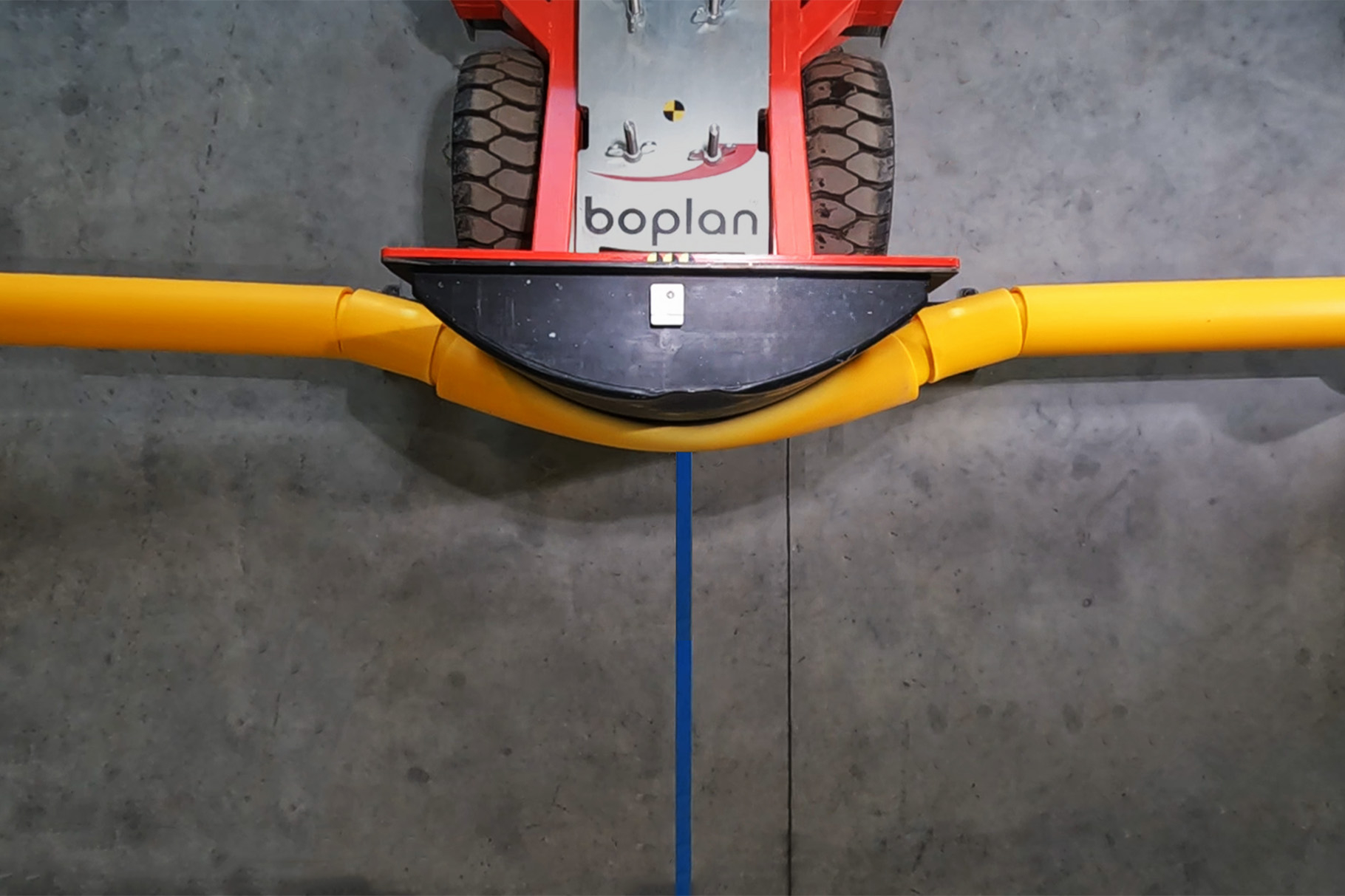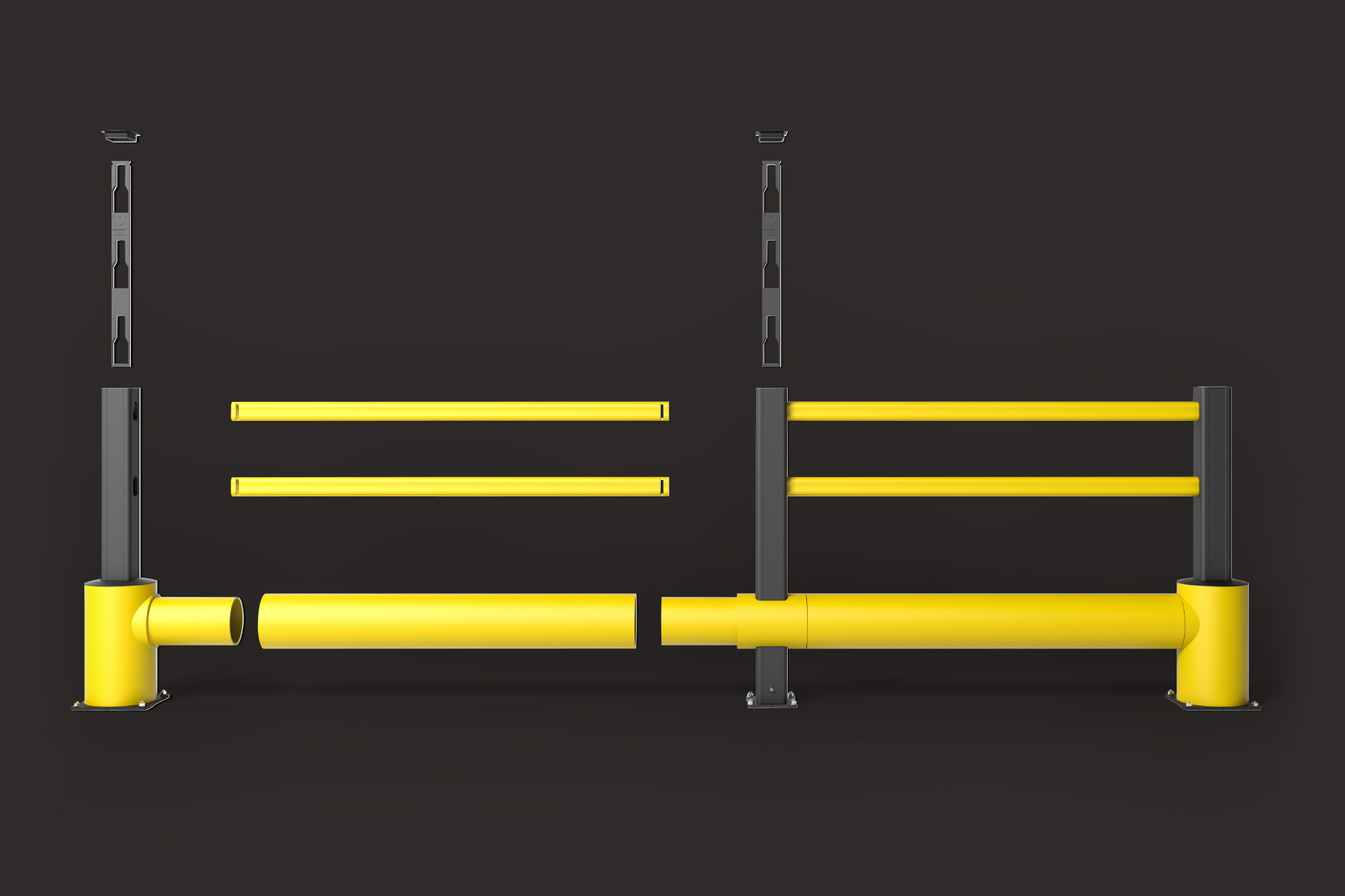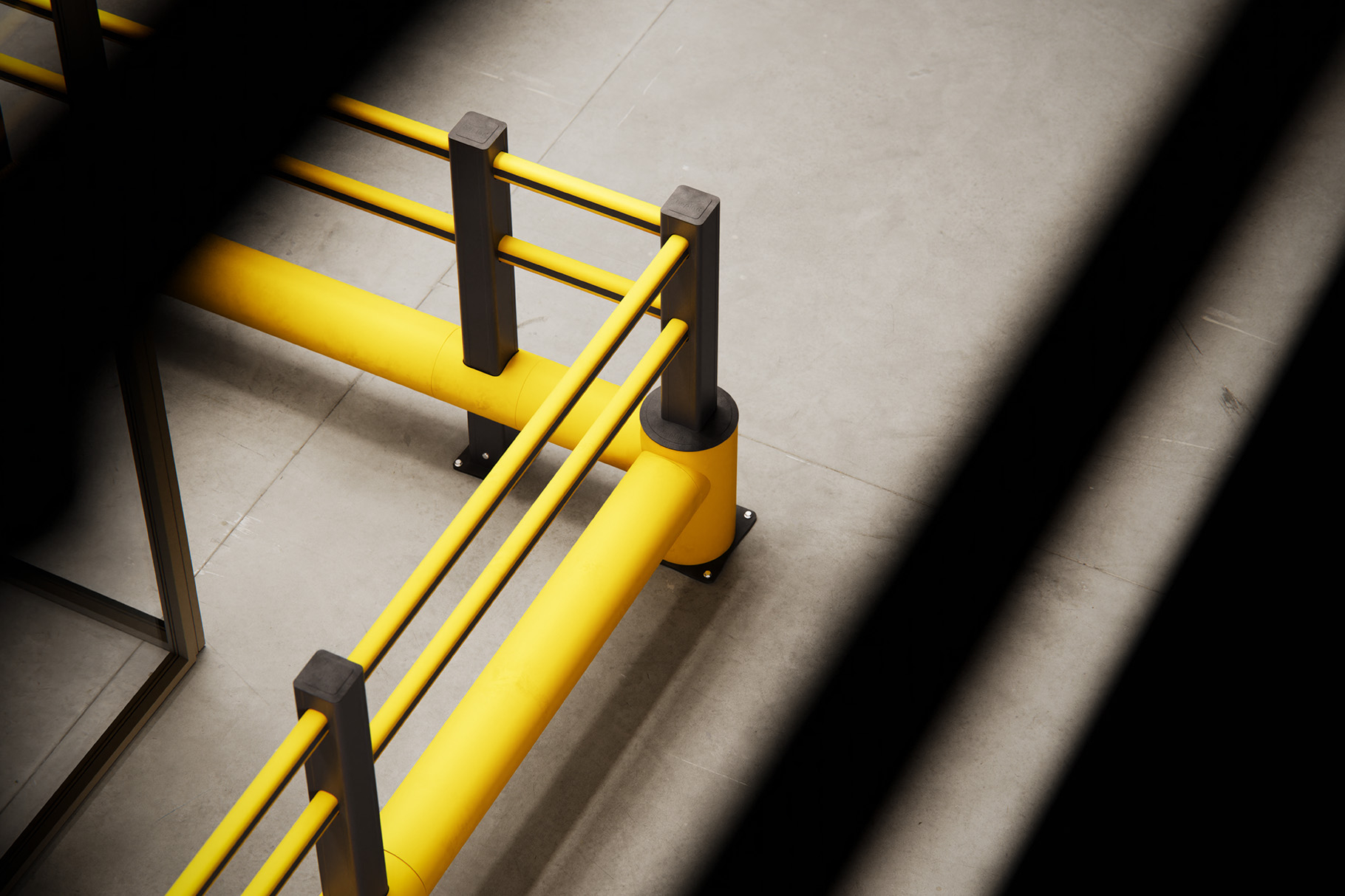Why polymer safety solutions are preferred in industrial environments
Safety is paramount in industrial environments. Choosing the right collision protection is critical. While traditional steel safety solutions have long been the standard, the advent of high quality polymer safety products has revolutionised the industry. Here are some compelling reasons why polymer protection is almost always the best choice over steel solutions.
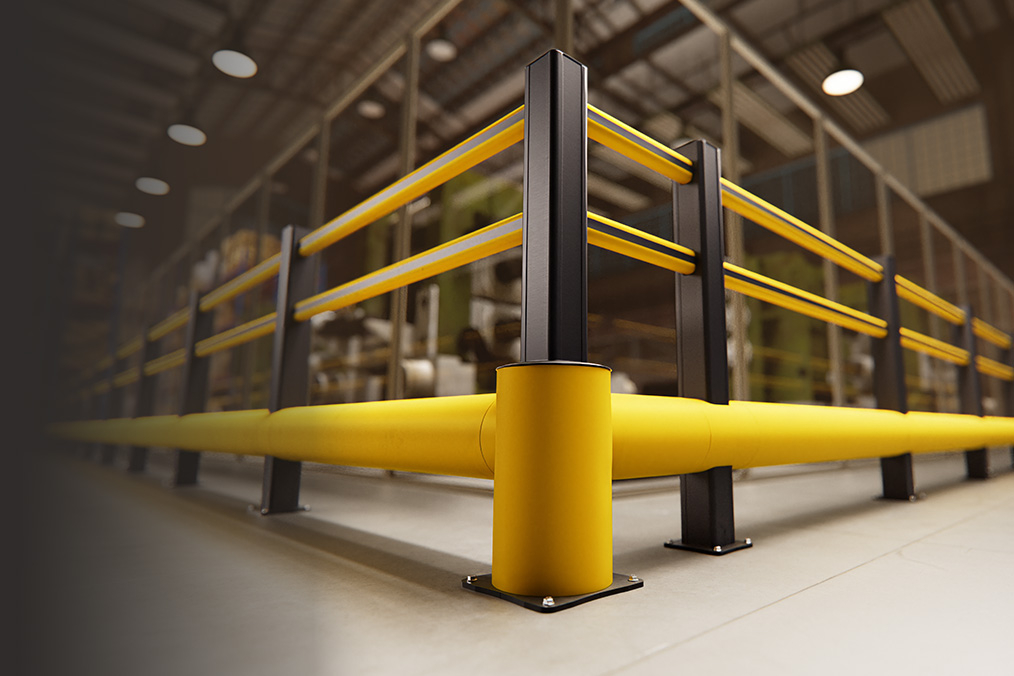
Excellent shock absorption and at least as strong
Polymer safety solutions are renowned for their impressive shock-absorbing properties. This means that in the event of a collision, the impact is absorbed and distributed over a larger surface area, minimising damage to both the guard and the vehicle. Polymer crash protection has the same properties as steel in terms of strength but is non-destructive. As a result, polymer offers superior protection compared to steel, which primarily reflects the energy of a collision.
Flexibility
Polymer safety barriers are easily adaptable. This makes it much easier to find a custom solution. A polymer application is also flexible, a characteristic not found in steel. In the event of a collision, the safety equipment will return to its original shape. A collision with a steel element will not only cause permanent damage to the protection itself, but the vehicle will also suffer damage.
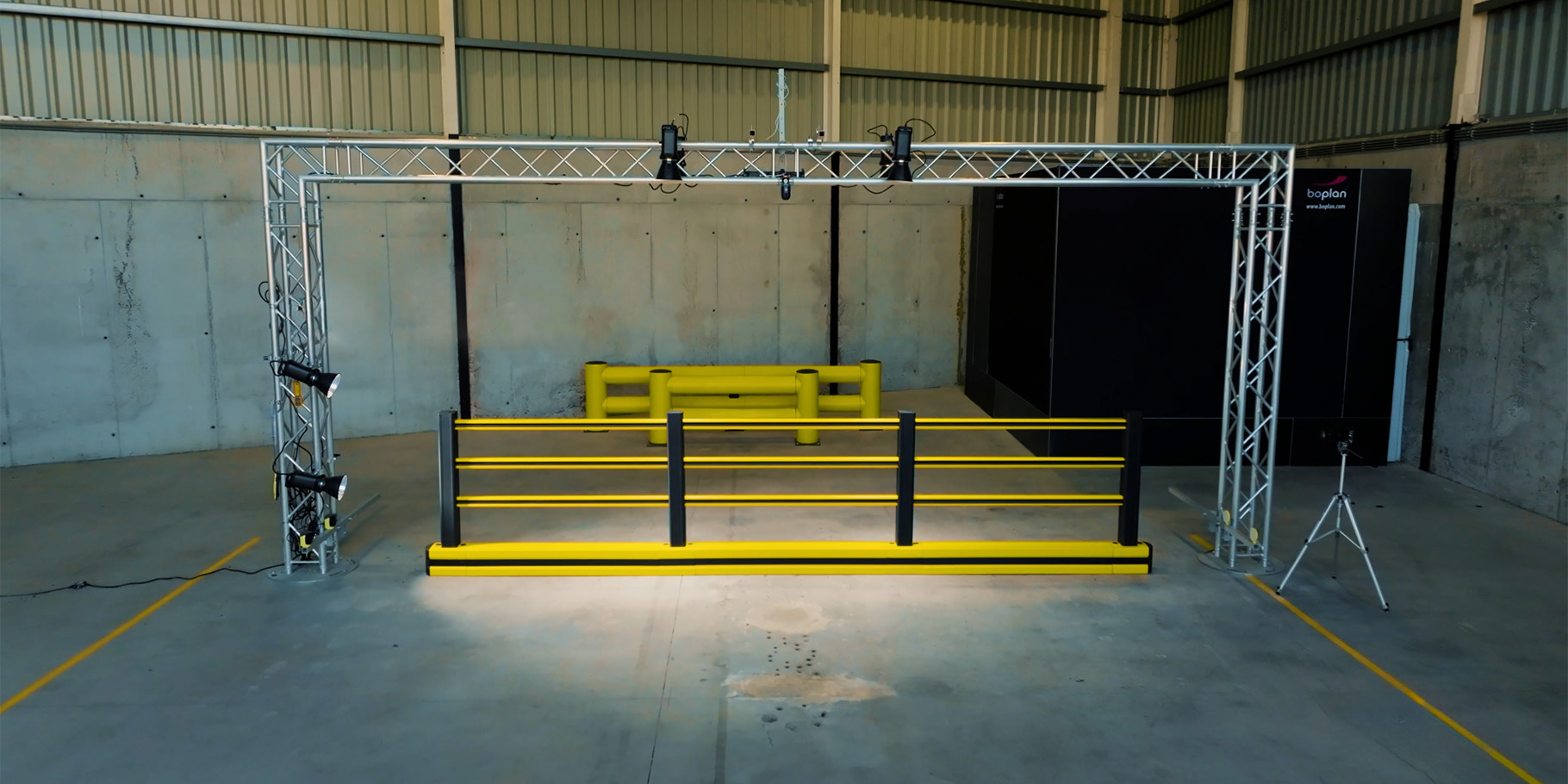
Modular design
Our polymer safety solutions are modular. No screws or bolts are required to interlock these parts, allowing some freedom of movement between the different elements. This 'loose' locking method reduces the risk of breakage on impact. Polymer is also easy to customise. A good example of this is the KP UNIVERSAL column protector. Because of its design, it can be made to fit any size column. This can be done by sawing the arms of the construction until it fits perfectly on the column. Working with steel in this way is a completely different matter.
Colourfast and highly visible
Unlike steel, polymer guards are not painted. They are made entirely of coloured material. A damaged steel construction will lose its colour, which is not possible with a polymer construction. Yellow is the best colour for polymer guards, but other colours are possible. In addition, they can easily be fitted with luminescent or reflective strips.
Environmentally friendly
At a time when sustainability and environmental awareness are becoming increasingly important, polymer safety barriers offer an environmentally friendly alternative. Our polymer is fully recyclable and the manufacturing process has a lower environmental impact compared to traditional steel solutions.
Durability and longevity
Corrosion resistant
One of the biggest disadvantages of steel barriers is their susceptibility to corrosion. Especially in wet and chemically aggressive environments. Polymer, on the other hand, is completely immune to corrosion. This guarantees a longer lifespan and lower maintenance costs in the long run.
Weatherproof and resistant to toxic substances
Another weakness of steel is the potential for rust due to weather conditions. Paint can slow down this process, but eventually, corrosion will occur. Polymer is not subject to oxidation at all. Environments, where chemical products are processed or used, are also no problem for polymer safety barriers.
No floor damage
When a forklift truck hits a steel bollard, there is a chance that the bollard will be pushed out of the ground. The consequence: damage to both the forklift and the floor - a double repair cost. A polymer protective fence or bollard leaves the floor intact because it absorbs the force of the impact and distributes it over the entire volume.
Conclusion
As you can see, polymer safety products offer significant advantages over steel solutions in industrial environments. Polymer is a progressive choice that not only enhances safety but also improves the operational efficiency and sustainability of your facility.
